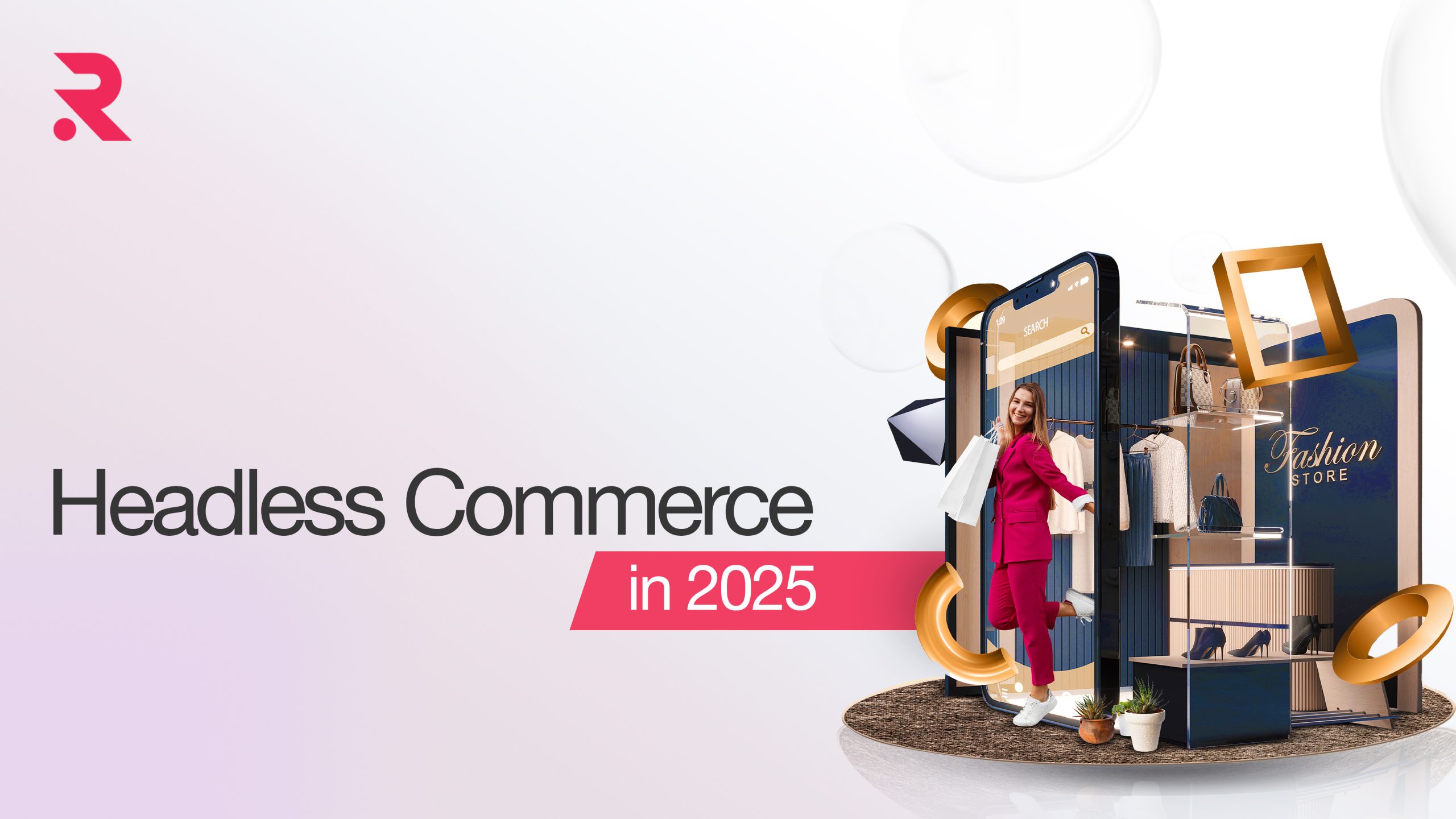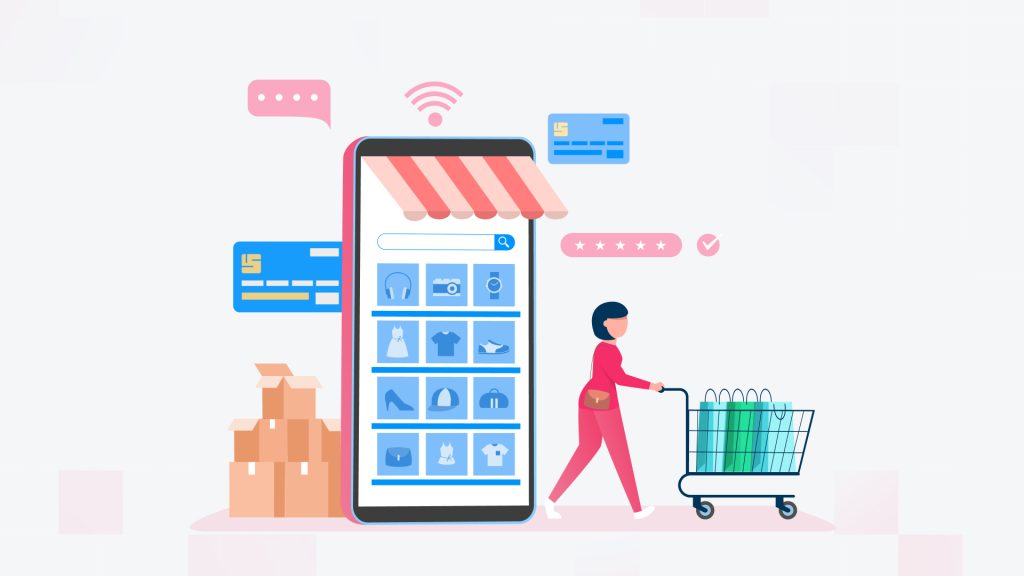Exploring Headless Commerce Solutions in 2025
By 2025, there is no doubt that holding on to the conventional online store setup may mean having huge, missed opportunities.
- July 11, 2025
- by Tarun


Headless commerce has moved beyond being a mere buzzword; it is now an inherent requirement for businesses. Its value is not just in keeping your customer-facing elements separate from your underlying technology. Instead, it’s all about achieving unprecedented speed, enormous scale, and the level of creative empowerment necessary to create customer experiences that really convert, turning fleeting browsers into devoted buyers. Such paradigm-shifting transformation allows business organizations to turn on a dime at warp speed, catering to every consumer requirement and embracing every technological leap with outstretched arms.
What Is Headless Commerce?
To be able to share a common concept prior to diving into some of these platforms, let’s define it.
Headless commerce really refers to architecturally separating your site’s frontend (the pretty face customers see and engage with) from the backend (the commerce engine at its heart processing data, products, and orders). In other words, the pretty presentation has no relation at all to the strong commerce engine. This freedom of criticism gives businesses tremendous power: you can opt or even customize different frontends such as sophisticated mobile apps, lightweight web pages, interactive electronic kiosks, or even voice commerce interfaces while seamlessly integrating into one compelling backend system.
Consider ordering your favorite pizza. Whether you go through a mobile app, a voice assistant, or a digital kiosk, the underlying backend system that has to handle ingredients, order status, and delivery remains the same. That is the inherent advantage of headless: enabling customer touchpoint interaction without compromising core business functionality. This pattern isn’t fashionable; to modern businesses, it’s downright essential.
Why Businesses are Embracing Headless in 2025

The swift acceleration of headless architecture fuels its ability to solve several of the most pressing issues faced by today’s businesses.
Seamless Omnichannel Experiences
Customers now interact with brands across an increasingly long list of touchpoints. These includes websites, mobile apps, social media platforms, and even emerging smart home devices. A unified, headless backend is necessary to deliver consistently seamless, unified, and personalized experiences across all of these different interactions. This unified customer experience creates stronger brand loyalty and significantly boosts total engagement.
Unprecedented Speed & Agility
In the fast-paced digital age, how quickly products and features reach the market is a matter of utmost importance. Headless architecture allows developers to rapidly imagine, build, and deploy new user interfaces. It imposes updates as needed and executes critical user interface updates without being hindered by heavyweight backend dependencies. This agility significantly reduces development cycles so that businesses can innovate quickly. It keeps up with shifting markets with unprecedented speed.
A Developer’s Paradise
Decoupling in headless systems also grants developers immense liberty and independence in the creative process. Developers can create highly optimized and tailored user interfaces by leveraging modern, state-of-the-art frontend frameworks like React, Angular, and Vue.js. Such liberty from monolithic shackles fosters an innovative culture, nurtures best talent, and empowers teams. It crafts exactly what unique business needs demand, rather than templates limiting it.
Improved Performance Metrics
Decoupled systems inherently confer a massive performance advantage. You can optimize frontends independently, which results in incredibly fast page loads, minimized navigation latency, and a reactive user experience. Increased performance maps directly to minimized bounce rates, improved customer satisfaction, and most notably, improved search engine rankings due to improved Core Web Vitals.
Inherent Futureproofing
Consumer expectations change continuously. What’s revolutionary now can be the standard tomorrow. Headless commerce provides the ultimate safeguard against technological obsolescence. Whenever new tools, channels, or technologies emerge, businesses can add them effortlessly. They change course without anyone forcing them to undertake an expensive and time-consuming redo of their entire supporting infrastructure. Such inherent flexibility assures longevity and a competitive advantage.
With this background in mind regarding why headless Commerece is so crucial, let’s now discuss what general solutions exist. What follows is an in-depth summary of the top headless commerce platforms that are driving space in 2025.
Need a Stunning Web Development Services?
We Can Help!
Top Headless Commerce Platforms in 2025
We have made thorough comparisons of the most recent industry reports, scanned expert blogs, and cross-checked expert opinions to prepare this ultimate list. These platforms identify themselves not only by their feature set, but also by their incredible flexibility, innovative strategies, and robust support infrastructure.
Shopify Plus + Hydrogen and Oxygen
Shopify Plus continues to establish itself as an uncontested leader in 2025. Its own headless platform, Hydrogen, has matured exceptionally well to be a clean and sexy but open development platform. Oxygen, meanwhile, serves up integrated, high-performance hosting and deployment capabilities directly from Shopify, and the Shopify plus does a great job at democratizing headless commerce and making it far more accessible to brands of nearly all sizes, from would-be scale-ups to companies already well established.
- Advantages: Quicker development with pre-built templates and reusable components; excellent performance optimization; seamless ecosystem integration with Shopify’s huge app and API ecosystem; hosted and deployed via Oxygen; solid brand recognition and support.
- Pros: Offers slightly less raw, unfiltered control than fully API-first platforms for brands that need full customization; costs can quickly spin out of control, particularly with a great many third-party apps and additional features; requires a dedicated learning curve in order to achieve complete mastery of Hydrogen and Oxygen.
- Best Suited For: Large and medium-sized enterprises, DTC companies, and high-growth retailers who need to launch heedlessly in a hurry without the inconvenience of building a tailored solution from scratch. It is particularly suited for those already entrenched in the Shopify ecosystem.
BigCommerce with Decoupled Architecture
BigCommerce is yet another industry-leading, powerful headless commerce player. Its proprietary Open SaaS strategy, combined with levels of API support that are incredibly wide and deep. It makes it a favorite forever among developers who need a very extensible, scalable solution without the burden of self-hosting the underlying commerce engine. It is designed to accommodate high transaction volume and complex catalogs.
- Advantages: Native, high-performance multi-storefront features for global expansion or lots of brand portfolios. Full REST and GraphQL API suite enabling difficult integrations to be simple (ERP, CRM, PIM). Excellent documentation and active developer community. Scalable to enterprise-grade business with massive product sets and large traffic; native PCI DSS compliance.
- Pros: While it cooperates well with third-party CMS choices, its out-of-the-box native content management functions are not as thorough. Achieving genuinely one-of-a-kind, bespoke frontend designs might mean extra external tools or bespoke development. The extent of features and API support can feed back into a more challenging initial learning curve for less technologically blessed small businesses.
- Best For: Enterprise brands, B2B retailers, and brands with mature product catalogs or growing internationally, requiring an extremely flexible, enterprise-grade commerce engine that can integrate heavily with business systems.
- Ideal For: Multinational companies and fast-growing businesses with operations in multiple countries. Those who have very complex international commerce requirements, or companies committed to a simple composable commerce strategy from the start.
Fabric
Fabric has strategically positioned itself as a top-tier enterprise-grade headless commerce solutions company. Its modular design philosophy enables brands to precisely select and include only the very specific features and functionality they truly need, without unnecessary bloat and cost.
- Pros: End-to-end API stack for commerce core capabilities (cart management, price engines, checkout flows), allowing highly customized workflows; designed to be extremely fast, flexible, and scalable; every component with headless-first design; microservices-based architecture behind the scenes means high performance and resiliency; supports multiple deployment configurations for enterprise management.
- Cons: Typically a greater initial capital outlay due to its enterprise scale and tailor ability. Better suited for firms with committed, technical internal strengths. The complexity of its modular pieces can provide a steeper learning curve for new users or small groups.
- Ideal For: Large-scale businesses, well-established companies, and advanced B2B operations requiring highly scalable, composable commerce functionality and possessing the technical means required to implement and support sophisticated systems.
Vue Storefront
While Vue Storefront itself does not serve as a commerce platform, developers designed it as an incredibly versatile open-source frontend solution specifically for seamless integration with numerous backend commerce engines. It really stands out in providing lightning-fast Progressive Web Apps (PWAs) that are mobile-first and natively optimized for best-in-class user experience.
- Pros: Built for maximum performance, thus lightning-fast page loads, which greatly improves user experience as well as SEO. It has a massive, active, and extremely loyal set of open-source users. Highly compatible with top commerce platforms (Magento, Shopify, BigCommerce, CommerceTools, etc.). Optimized to deliver improved mobile user experiences through PWA support. Built on Vue.js, a top as well as robust JavaScript framework.
- Disadvantages: As a front-end solution, it requires integration with other back-end commerce platforms, which introduces implementation complexity. Might not be suitable for development teams unfamiliar with the Vue.js framework. Being an open-source project, businesses are ultimately responsible for their maintenance and updates.
- Ideal For: Brands very much interested in delivering best-in-class performance and mobile user experience, especially those who wish to leverage PWAs. It’s suitable for companies who already use a go-to backend commerce platform or will do so.
CommerceTools
CommerceTools is an early adopter and vocal champion of the MACH (Microservices, API-first, Cloud-native, Headless) movement. It’s still firmly in command and on top of the enterprise realm of the headless commerce space, with requirements for flexibility and scalability.
- Advantages: It is architected for enormous scalability and complete composability, allowing companies to build extremely highly customized. Such as fault-tolerant, and future-proof commerce solutions. This boasts over 300 highly granular APIs covering almost every aspect of the commerce lifecycle. Which offers strong enterprise-grade support, professional services, and a high global footprint. Which is developed from the ground up as a cloud-native platform to deliver high availability and automatic scaling. Its MACH principles enable it to evolve and add new technology constantly.
- Disadvantages: Its embedded power and flexibility may equate to massive complexity and steeper learning curve for small organizations lacking technical know-how; requires a high level of familiarity with its API framework and MACH fundamentals, typically needing expert developer proficiency; incurs a massive cost investment, most suitable for large organizations having advanced digital transformation strategies.
- Ideal for: Large, complex businesses and global brands with bold digital transformation strategies, requiring a hyper-scalable, highly flexible, and future-forward commerce platform built on true MACH principles.
Saleor
Saleor is rapidly gaining substantial momentum in 2025, largely because of its cutting-edge, robust open-source base splendidly crafted on Python and Django. Its use of GraphQL for API communications renders it particularly appealing to today’s developers.
- Pros: Takes advantage of GraphQL to be extremely efficient and dynamic when querying the frontend; is extremely extensible and developer-friendly; has an extremely lightweight architecture and data fetching optimized for performance, resulting in solid performance; boasts a large and active open-source community; provides an inexpensive entry point to very highly customizable e-commerce configurations without the cost of licensing; builds upon Python, Django, and GraphQL, established and highly popular technologies.
- Pros: In growth, businesses may find that their support infrastructure is weaker compared to more established commercial platforms, requiring greater self-reliance; teams with existing Python and Django expertise can best utilize it; as open-source, businesses must host, maintain, and secure it, requiring specialist technical personnel.
- Recommended For: Scale-ups, startups, and mid-sized companies seeking a highly cost-effective, flexible, and high-performance headless commerce solution, particularly those with in-house Python-expert development teams or a preference for open-source solutions.
Need a Reliable Web Development partner to help grow your Business?
Our Experts Can Help!
Choosing the Best Headless Platform for Your Business

With so robust a set of choices, deciding on the “right” headless platform is never an apples-to-apples decision. The ideal solution will completely depend on a sophisticated assessment of your unique business model, the makeup and skills of your existing staff, your intended growth strategies, and your existing technology stack. Following are some key questions to systematically guide your decision-making process:
How much front-end flexibility do you require?
Do you want absolute, utter creative liberty in order to create an extremely highly customized, original customer experience, or would ready-to-use themes and templates from a platform be sufficient for your existing and future needs? The degree of customization desired has a great impact on platform choice.
Do you have a global strategy?
If going global is part of your strategy, prioritize native, high-quality localization features, seamless multi-currency support, and sophisticated multi-inventory handling functionalities from day one.
Do you have an internal developer?
Headless commerce, as powerful as it is, is inherently development intensive. Determine if you can devote a quality enough and focused internal development team or if you may need to outsource heavily or do most of your work with freelancers.
What’s the budget, and when do you consider landing awesomely?
Some needed hefty investments upfront for licensing, custom development, etc., while others present much lower entry points and hold promises of quicker early wins. Map your financial and time resources with utmost care.
How strongly should integration with existing systems be pursued?
Consider the best value headless platform integration into your current critical business systems, such as your CRM, PIM, CMS, or ERP systems. The best API and out-of-the-box connectors are what you want here.
What is your long-term scalability requirement?
Think of not only the current transaction level but also the projection of growth. Can the platform scale handle exponential traffic growth, order grow, and product growth without affecting the performance?
What support level do you need?
Do you want a strong commercial support group with SLAs, or are you comfortable making use of active open-source communities and self-help forums?
Headless Commerce and SEO
Unlike the past, headless commerce does not harm SEO; instead, it can make your visibility better with proper implementation.
- Implement Server-Side Rendering (SSR) or Static Site Generation (SSG): Technologies such as Next.js or Nuxt.js allow for pre-rendered HTML, making content crawlable and indexable by search engines. Do not rely only on client-side rendering (CSR), which could limit visibility if not properly managed.
- Use SEO-Friendly URLs: Maintain clean, descriptive URLs with no unnecessary parameters. Implement logical, consistent naming patterns (e.g., /category/product-name) for better crawlability.
- Add Structured Data and Metadata: Use your headless CMS to manage title tags, meta descriptions, canonical URLs, and robots directives. Implement schema markup for rich results like product reviews and availability.
- Improve Core Web Vitals: Headless setups tend to be better. Optimize responsiveness, rapid loads, and layout changes. Leverage CDNs, asset compression, and reduced blocking scripts.
- Manage Sitemaps and Robots.txt: Automate your sitemap.xml and get it submitted. Minimize robots.txt to get crawlers to crawl well without blocking key content.
- Simplify Content Creation: Employ a flexible headless CMS (like Contentful or Sanity) that allows marketers to publish SEO-friendly content without requiring dev assistance.
- Treat Redirects with Caution: When moving, utilize 301 redirects to maintain link equity and prevent broken pages.
Using the correct tools and techniques, headless commerce can improve your SEO performance above what many monolithic solutions can provide.
What’s Next for Headless Commerce? By 2025.
Headless commerce will become the backbone of modern digital retailing. As technology keeps changing, we expect the ecosystem to be smarter, faster, and more modular. Here’s a preview of what’s to come:
- AI-Powered Discovery & Personalization: Hyper-personalized shopping in real-time will be made possible by advanced AI that responds to user behavior, preferences, and even mood. Such engines will seamlessly integrate into headless frontends.
- Composable Commerce by Design: Selecting best-of-breed solutions for PIM, CMS, payments, and checkout will be the norm. Companies will carefully construct agile tech stacks out of interoperable services.
- Look for headless platforms that non-developers use. Merchandisers and marketers will have the ability to manage content, layout modifications, and A/B testing without developers.
- Real-Time Analytics & Predictive Insights: Built-in analytics will provide a deeper, real-time understanding of user paths and campaign performance, enabling companies to respond to the data and make better predictions about their behavior.
- AI-Generated Content & Testing: Generative AI will drive landing pages, copywriting, product description, and several A/B variations maximizing engagement and conversion through automation.
- Immersive & Metaverse Commerce: Headless will be instrumental in bringing shoppable experiences into virtual worlds, virtual try-ons, interactive 3D product models, and in-world purchases.
- Smarter Checkout Experiences: Checkout flows will adapt dynamically to each shopper, offering personalized payment options, shipping options, and incentives in real-time user data.
- Edge Computing for Global Tempo: To counter latency, especially for global consumers, headless platforms will be dependent on edge computing pushing processing towards the consumer for faster, more predictable experiences.
Final Thoughts
Commerce today is fast, nimble, and anything but linear. Headless commerce is the driving force that enables this revolution to empower companies to break free from legacy technology, reimagine customer experiences, and take the lead in a digital world that is in constant flux.
It will be the prosperous brands that didn’t wait for ideal circumstances as we move through 2025 and beyond. They will be the first to adapt, try new things, and build quickly.
Not everyone is a member of the headless revolution. With the correct tools, mentality, and partners, any firm prepared to take the lead can achieve it.
So, consider this: are you prepared to create something genuinely future-proof, or are antiquated systems still binding you? Now is the time. The future doesn’t have a head. Is it truly future proof? Now is the moment. The future doesn’t have a head.
 Shopify
Shopify

















